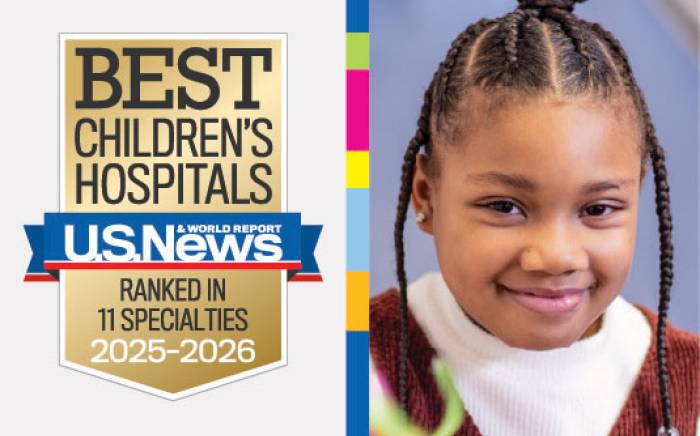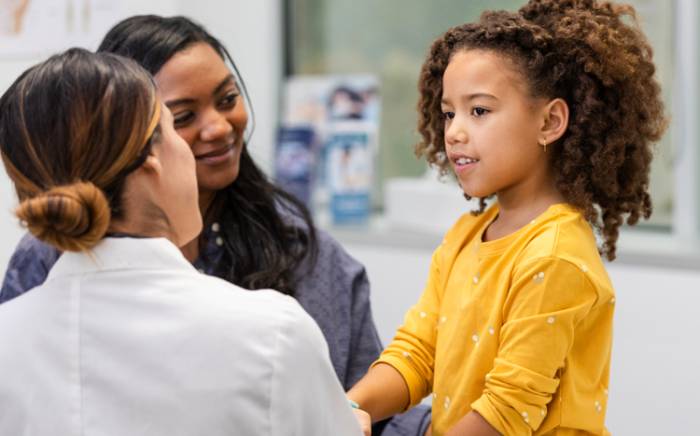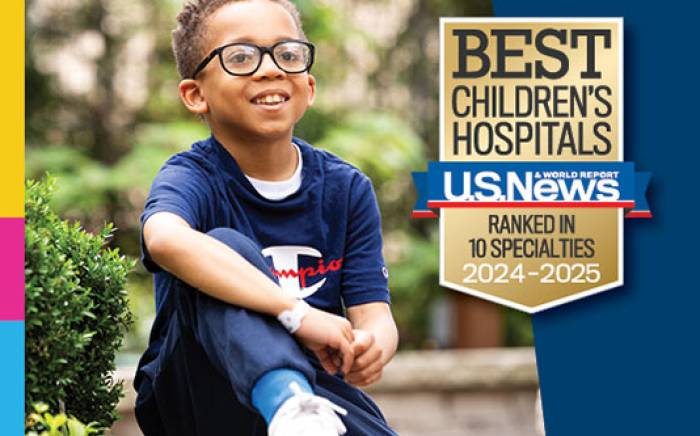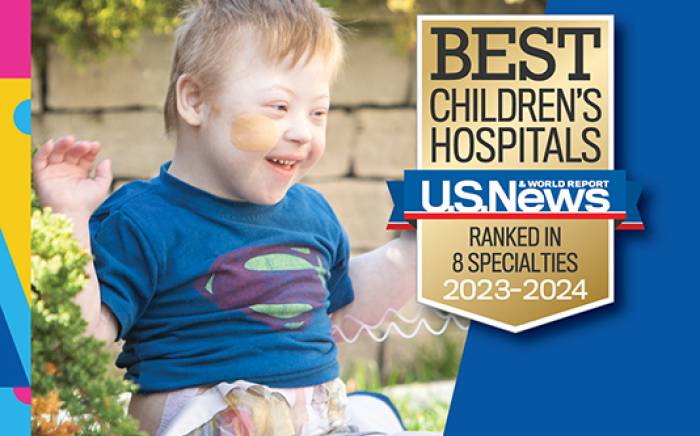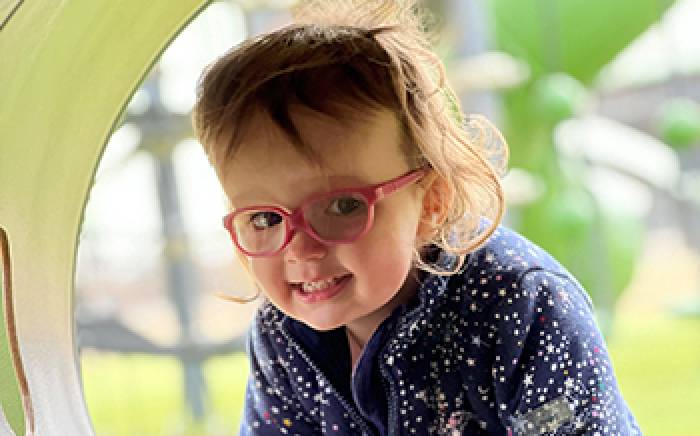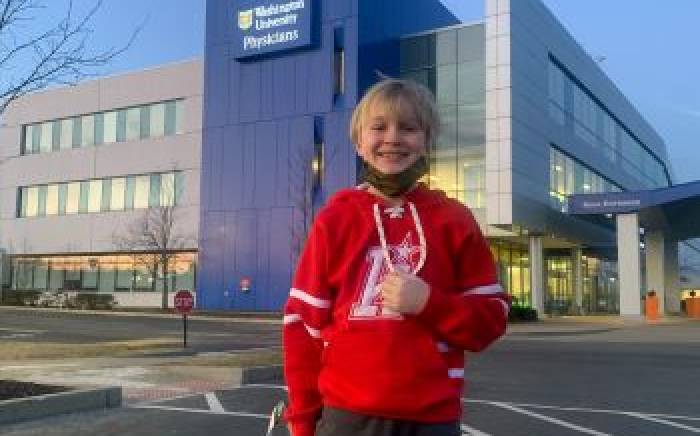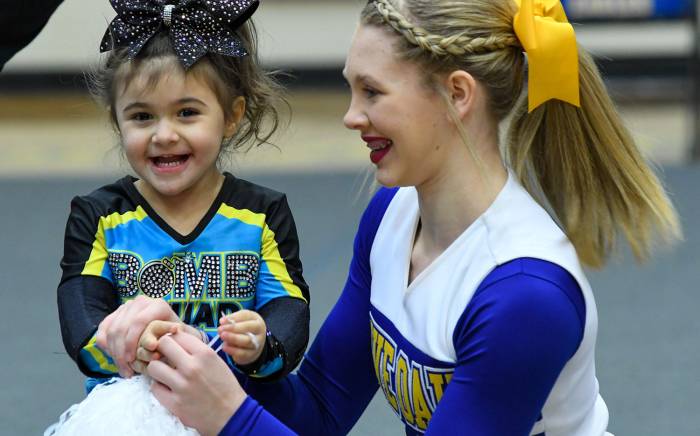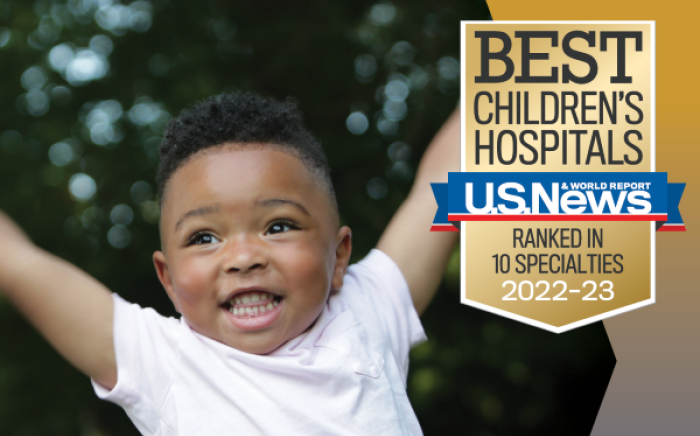This story originally appeared in the Summer 2023 edition of the St. Louis Children’s Foundation Magazine. Learn more about how donors make a difference and how you can get involved at any level!
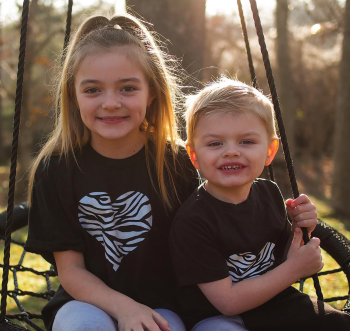
When you look at 4-year-old Kayden, you see a very busy third child who loves hockey, superheroes and his family. What you don’t see are the medical rarities he lives with every day.
Kayden’s mom, Kristin, notes her third pregnancy was textbook normal. Kayden was born at 38 weeks at a local hospital, but within 20 minutes of his birth, the delivery room was full of uncertainty. The nurse noticed a sacral dimple, an indentation on the lower back. Most sacral dimples are harmless and Kristin’s middle child, Lyla, was born with one too, so she and her husband quickly dismissed their concern. However, in Kayden’s case, the nurse saw another dimple above it. Kristin remembers the panic that took over. There was talk about their new baby needing surgery right away and that he might never be able to walk. The medical team took Kayden for an ultrasound on his spine and did an abrupt about-face — telling his parents it was fine and to follow up with his pediatrician in a couple of months.
His parents weren’t comfortable with waiting, especially after the panic that had occurred hours earlier, so they called their pediatrician, who consulted with Washington University pediatric neurosurgeon Jennifer Strahle, MD. She requested a brain and spine MRI. Kayden’s brain was cleared as normal, but the imaging test revealed he has a dermal sinus tract, a channel of scaly tissue found along the body anywhere between the nasal bridge and the tailbone, as well as a suspected tethered cord.
Kayden’s medical team at St. Louis Children’s knew he needed surgery, but COVID-19 delayed the procedure until he was 13 months old. The pre-op spine and brain MRI revealed Kayden had developed Chiari malformation type 1, a rare, complex brain abnormality that affects where the brain and spinal cord connect. Kayden’s parents were shocked to learn he was living with two rare conditions. By definition, rare diseases are those affecting just one in 2,000 people, or even fewer.
His surgery to remove the tract and release the tethered cord was successful. But it also left his mom with a lot of questions. “Until you’re thrust into the world of rare disease, you don’t understand the very limited knowledge that’s out there,” said Kristin.
Imagine her shock when her middle child and only daughter was also diagnosed with Chiari malformation in February 2023. Lyla, who is 8 years old, started having headaches in August 2022 and they aggressively got worse as the year progressed. Kayden’s medical team recommended she undergo an MRI to rule out something like Chiari malformation since it was so rare, but her results came back positive. Now, two of Kristin’s three children are being followed by the neurosurgery team at St. Louis Children’s to ensure they continue to thrive while monitoring their rare diagnoses.
St. Louis Children’s and Washington University are working together to create a groundbreaking approach to finding answers for kids like Kayden and Lyla. The Center for Rare, Undiagnosed and Genetic Diseases will be the first of its kind: a research center focused on increasing the diagnostic rate while simultaneously reducing the time spent waiting from diagnosis to therapy. The Center will be part of the Children’s Discovery Institute, driving pediatric discoveries to uncover what may now seem unfindable: lifesaving treatments and cures for childhood illnesses.
Families with children suffering from rare disorders spend years looking for answers. For Kristin, knowing this new Center will provide insight into the unknown for other families through research is one of the reasons she wants donors to understand the importance of making a gift: “Boosting knowledge and shaping statistics to help others is vital, and research is a huge part of that.”

